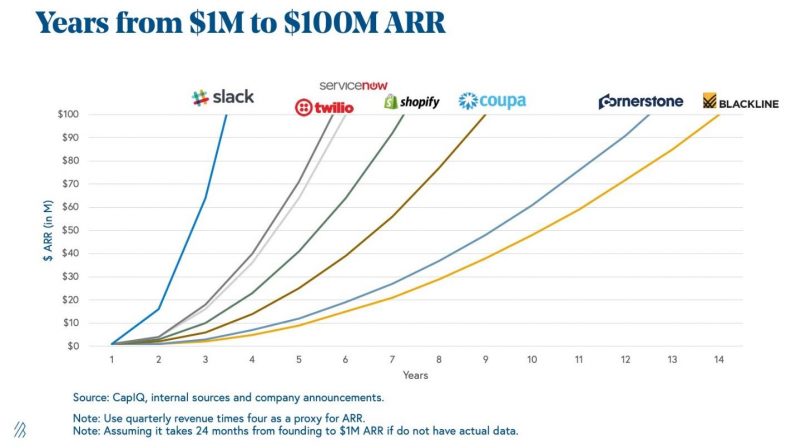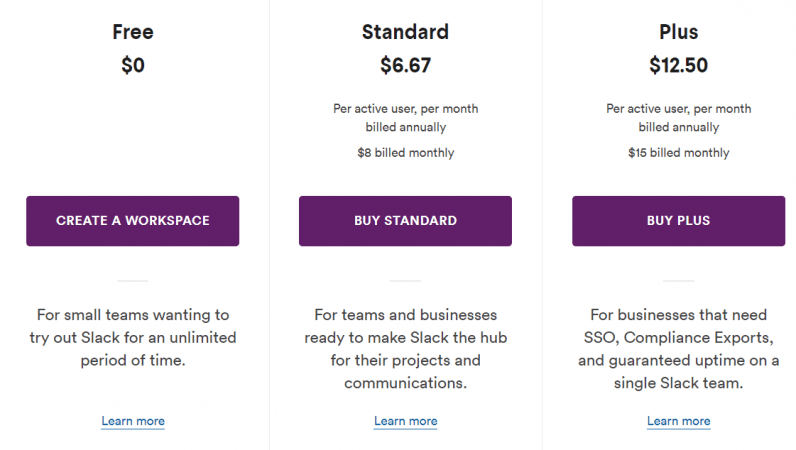Fortnite gained massive popularity and is making billions of dollars, but it is completely free to play. Unlike typical freemium games, where you pay to improve performance, the premium purchases are only cosmetic. This has fostered a sense of fair play, but also its own wave of social pressure that has people spending, on average, $85 plus per player. Slack has not taken off as fast, but for a B2B software company, it has been on quite a tear, reaching $100 million ARR in three years. Check out this graphic from BVP: Credit: Pulse2017How did this happen? Let’s examine the numbers and what makes it so successful, and whether this could apply to your business. According to a recent MarketWatch analysis on July 2, “Slack’s direct listing, which lets investors sell into the public markets, set its reference price at $26 per share late Wednesday, suggesting a market valuation of $15.7 billion. It opened at $38.50 […] and has soared 58% to $41.26.” They have 95,000 paying users, with 645+ that pay more than $100,000 per year for their service. They passed 10 million daily active users in January of this year. SaaStr, in 2012, said you would need 50 million DAUs to build a unicorn. Well, things have obviously changed. These are all impressive numbers — now let’s look into their pricing model: Credit: Slack
Free: Small teams, up to 10 apps, 10,000 searchable messages Standard: Unlimited apps, groups calls up to 15, full archive, Google authentication, guest access Plus: SSO, guaranteed uptime
Patrick Campbell, of ProfitWell, did the following research and calculated willingness to pay as follows: Credit: ProfitWellPatrick called this “about as close to pricing perfection as any company is going to get.” He went on to say: “The jump in willingness to pay at each team size is almost 100 percent, leading to clean segmentation. The low end is $3-$4. Slack is like, I don’t want to deal with a $20 customer that has 5 employees. I’m going to go and wait until they are willing to pay $8 per employee so it’s worth my time…we upgraded to the Standard plan because it totally made sense. And when you make that leap, you don’t upgrade from $0 to $20 per month. You upgrade from $0 to $200 or $300 per month. You go from being a free customer to being a significant customer, and it makes sense to you.” So why does this model work for them? Here is my take:
The freemium model allows for market penetration, with no barrier to using it, and provides a strong and loyal base of word of brand ambassadors. It serves an unmet need, one that many people don’t even know they had. Slack’s co-founder and CEO, Stewart Butterfield, said “Slack is the kind of thing you don’t know you need but once you have it, you can’t live without it.” There is a strong network effect. The model allows it to add hundreds or even thousands of paying users at a time. They nailed the value metrics and clearly delineated their offer according to these. This was not random. You can see the work of pricing expertise involved here. They clearly did some greater research and / or received some sage advice from a pricing expert.
Whether or not you are a software or subscription company/service, you can learn from this. Understand what your customers value and setting the breaks from free to good to better to best, accordingly. This is the real message here, and coming back to Fortnite, one that they also clearly understood. They made an environment that was also free to start, had a strong network effect, and took a different approach than their competitors in what and how to price. They incorporate a developer network and profit sharing to crowdsource content creation, as Slack has with the Bot network and open platform. If you are considering a subscription freemium, you should ask yourself the following questions of your business:
Does my offer have a strong network effect? If the total addressable market large enough to convert enough users to build a valuable company or offer? Do you understand the value metrics and have you done enough research to delineate the offers and attach pricing to them?
If the answer to any of these is “no” or “I am not sure” then you are not ready. If all are “yes” you are in rarified air, then congratulations — it’s time to go freemium.


